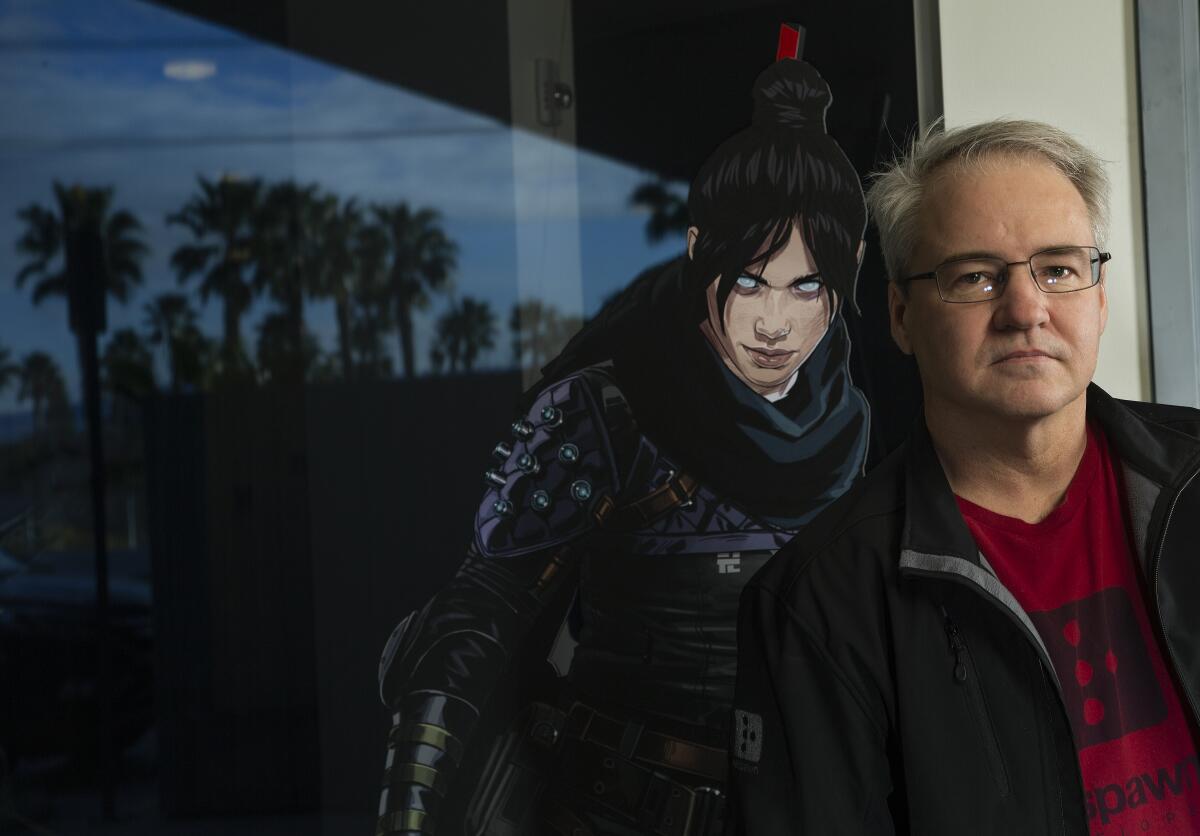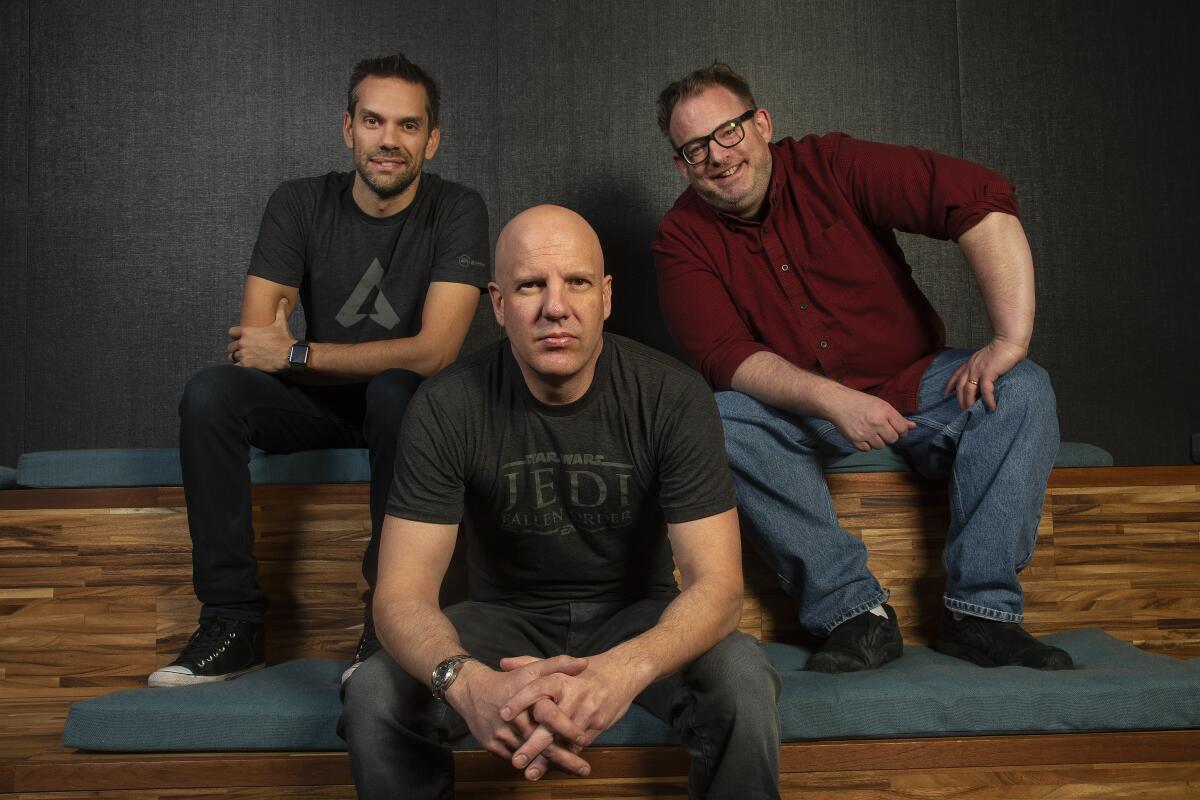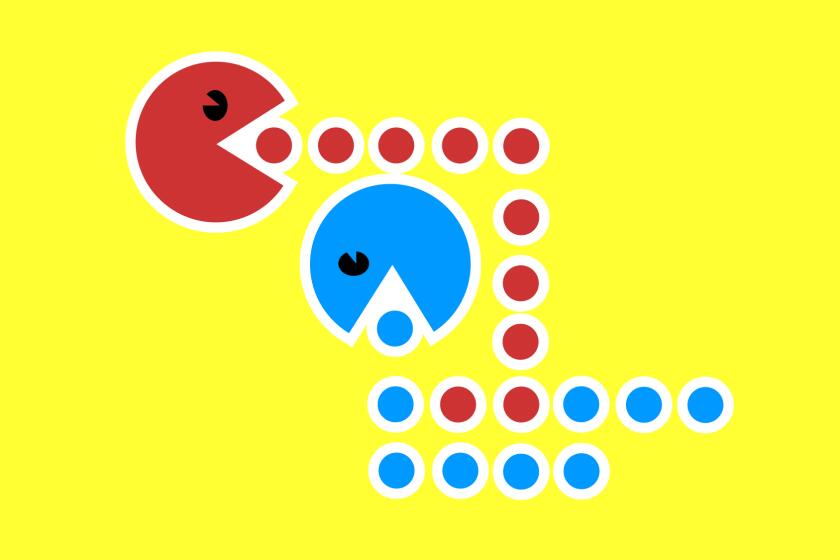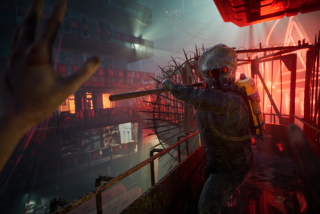From ‘Titanfall’ to ‘Star Wars,’ the evolution of game studio Respawn mirrors our search for story

If anything should put Vince Zampella at ease, one would assume it would be the topic of video game warfare. Zampella, one of the most recognizable figures of the modern gaming era, is after all responsible for much video game carnage.
With his Respawn Entertainment, he’s been an architect of sci-fi shooter “Titanfall.” Previously, with Infinity Ward, he helped define the “Call of Duty” franchise before an acrimonious split with Activision. Even earlier, with the studio 2015, he contributed to the “Medal of Honor” franchise, which often features front-line battle action. And yet five minutes into an interview Zampella is struggling to hold back tears as he recalls a visit to Arlington National Cemetery.
What sparked the memory was a seemingly straightforward question about Respawn’s reboot of “Medal of Honor,” a release that will essentially take Zampella back to his roots. “Had to start with this one,” he says, briefly burying his face in his hands.
It’s not just that the stakes for the upcoming “Medal of Honor: Above and Beyond” are higher than when he worked on the 2002 editions of the series — the company, after all, is working in virtual reality, where the challenge of palatable video game killing is upped when the participant is in a surprisingly convincing, full-scale virtual expanse.
Rather, Respawn, in reviving the long-dormant “Medal of Honor” franchise, has several ambitious ideas for adding heft to interactive entertainment. One of them is to intermix very real World War II stories with gameplay, alternating tense, sweat-inducing missions — one in which we’ll infiltrate a Nazi palace to steal and burn documents — with documentary footage of war veterans retelling and revisiting WWII stories and sites. One such film follows an American veteran in his 90s as he returns to the European battlefield where his friend fell. We watch as he shares hugs and stories with the family that now lives on the grounds, and cameras follow as he leads us to how and where he found his compatriot.
Zampella knows the power of these scenes, having accompanied filmmakers on some of the trips. “I took my son with me, who was 18 at the time, and we were at Arlington Cemetery on Gold Star Mothers Day, which is for mothers who lost their children in service. Seeing kids who were my son’s age ...”
Zampella begins to trail off as his eyes start to water, but he won’t be fully derailed. His somewhat guarded personality soon takes over to push back any potential tears and get back to a discussion of what turned out to be Respawn’s most expansive year. In February, the Chatsworth-based studio surprise-released the instantly popular free-to-play game “Apex Legends,” which has been sampled by more than 70 million players. Then in November the studio issued “Star Wars Jedi: Fallen Order,” a return for the space opera franchise to the narrative-driven home video game console, and arguably the least divisive, mass-marketed “Star Wars” product unleashed this year.
Earlier in 2019 Zampella predicted that “Fallen Order,” under the direction of Stig Asmussen (“God of War III”), would begin to remold Respawn developers — long typecast as “multiplayer shooter guys” — into interactive storytellers. Now he’s ready to look beyond Respawn, the studio he founded in 2010 with Jason West — which was acquired in 2017 by Electronic Arts. In 2020 Zampella will also lead the L.A.-based offices of another Electronic Arts-owned studio, DICE.
Destination DICE
DICE was founded in Stockholm in the early 1990s and is home to games such as “Battlefield,” “Mirror’s Edge” and “Star Wars: Battlefront.” But Electronic Arts characterizes its L.A.-based outpost as long dedicated to support for DICE’s core products. Under Zampella, there are plans to expand and launch an original, as-yet-unrevealed game. The company will remain separate from Respawn and, Zampella says, likely will drop the DICE name.
“We will probably rebrand,” Zampella says. “We want to give it a new image. We want people to say, ‘This is a destination you can go and make new content.’ I think they’ve kind of gotten the branding that they are the support studio for DICE Stockholm. I think rebranding is important for showing people, ‘Hey! Come work here. We’re going to do some amazing things.’”
The studio, he stresses, will be “separate from DICE Stockholm and separate from Respawn.”
Says Zampella, “We do talk a lot, and the more we interact and learn from and teach each other, the better we’ll be. So there’s interaction, but as far as the games, they’re their own studio.”
The move is being overseen by Laura Miele, who about 18 months ago took over as Electronic Arts’ chief studios officer. At a time when major console makers such as Sony and Microsoft are readying new systems for release in late 2020, and streaming and subscription services are providing more avenues to discover games, Miele says she is focused on broadening the Electronic Arts portfolio.
“I think under Vince’s leadership the expectation is to have them work on and create a game on their own,” Miele says. “And I genuinely believe that he is going to help guide them creatively. He’s going to help them further fortify and build out their talent and their team. I think we’re going to have a really strong studio out of our Los Angeles location. They can go from a support team to a full stand-alone studio to create a new game offering.”

As for what this means for Respawn, Zampella speaks of his role there now as more of a head coach.
“Star Wars Jedi: Fallen Order” leader Asmussen will continue to direct a narrative-driven branch at Respawn. The ongoing “Apex Legends” is overseen by Chad Grenier, who followed Zampella from Infinity Ward to Respawn to work on what would become the first-person-shooter series “Titanfall.” The virtual reality “Medal of Honor: Above and Beyond” is being spearheaded by Peter Hirschmann, whose “Medal of Honor” experience stretches back to the game’s early days when it was developed by DreamWorks Interactive.
“There might be more,” says Zampella, narrowing his eyes somewhat cryptically (the company even declines to say how many staffers it currently employs), but he adds, “I think my role is the same.
“Obviously with ‘Jedi’ coming out, my focus was a little more on getting that game out the door. Now that it’s done and out there, it’s, ‘OK, what’s next?’ Peter will get the Eye of Sauron.”
Endangered single players
The move to bring in Asmussen was instrumental in changing the tenor of Respawn. Jason West, who recently joined “Fortnite” developer Epic Games, left Respawn for unspecified family issues in 2013, before the company had issued its first game. “Titanfall” in 2014 was largely dedicated to fine-tuning the first-person-shooter by creating a game that nimbly moved among different action styles.
Talks with Asmussen began around that same time, before Respawn was acquired by its early investor Electronic Arts, and also before the industry would heavily pivot from single-player adventures to ongoing multiplayer games such as “Apex Legends,” a “Fortnite” competitor that lives as a live service with regular updates.
“In 2014, I don’t think we were talking about single-player action-adventure games being an endangered species,” Asmussen says. “That’s something that happened while we were working on the game. There was a rise in game experiences that were service-based and people could continue playing over and over. But we stuck to our guns. This is the type of the game we were going to make. I think what happened is live service games expanded the market, but they weren’t taking away the players who wanted to play a single-player action-adventure.”
While Electronic Arts hasn’t released official sales figures, “Fallen Order” was tracked as the No. 2 selling game of November, behind “Call of Duty” and ahead of “Pokémon Sword/Shield,” according to research firm the NPD Group. Where Asmussen’s team goes next, he says, isn’t “set in stone,” but there should be plenty of ideas to pull from. Before Respawn knew it was working on a “Star Wars” game — Electronic Arts possesses the license for the Lucasfilm/Disney brand — it had developed about 12 prototypes for a new intellectual property, one of which was properly demoed and shopped around the industry.
And Asmussen is steadfast in the types of games he wants to direct. “I’m not a very good competitive player,” he says. “That’s when you see the worst of me, in terms of temper. I haven’t done it in so long because it was getting the better of me. It’s a frustrating experience for me. I don’t have the patience.”
Miele cites Respawn’s ability to move quickly on an idea — to have, for instance, a rudimentary prototype up and running under Asmussen or to shift from a proper “Titanfall” project to put resources into what would become “Apex Legends” — as a trait she admires in Zampella’s teams and wants to spread among Electronic Arts’ other studios. “I feel really strongly about this,” she says, “and Vince has taught me a lot about this: rapid prototyping.”
10 ways video games impacted entertainment in 2019: The stories they told plus where and how we play now
“As I have partnered with him, I’ve noticed they get their games stood up and they have hands on their games really soon, sooner than other studios we have, outside of sports,” she says. “So we’ve adopted and brought in new prototyping tools and are highly encouraging teams to prototype and prove out game type, game flow and game features before we get to art execution and make it look pretty for executive presentations.”
While it may not be apparent from the outside, Zampella says there’s a sense of experimentation driving Respawn’s decisions, even behind more seemingly direct business-driven moves, such as the jump with “Apex Legends” into the free-to-play battle royale arena popularized by “Fortnite.”
Real-world conflict
Zampella and Grenier say they’re not terribly interested in challenging “Fortnite” as a communal hangout space — the latter recently has had crossovers with Marvel and Lucasfilm properties, even hosting a live event with “The Rise of Skywalker” director J.J. Abrams — but they are using “Apex Legends” as a way to better develop characters, ensuring that game mechanics and art style coalesce into visual storytelling opportunities.
“We tend to rapidly prototype characters at a high rate and throw them away when they’re not working,” says Grenier. “We do 10 times more prototypes than what actually make it into the game.”
Or as Zampella puts it, “Titanfall,” like a lot of other properties in “the sci-fi space,” started “to read as generic sci-fi.” He says, “That’s terrible for me to say about my own game, but we wanted something more identifiable by going into characters. ... To identify with a character, either by play style or because you like who they are and what they stand for, it was important for us to take that next step. Character-based is now super important to what we do.”
Other questions lie ahead. It’s clear Zampella has ideas he’s not yet sharing on where he intends to take the DICE L.A. team, but “Medal of Honor: Above and Beyond” will present more near-term challenges. Set in the early 1940s and in development with Facebook-owned Oculus, the game will capture the realistic tone of the early “Medal of Honor” games — each virtual gun, for instance, comes with a very specific set of hand gestures when it comes to reloading.
Shooting in VR is not always a comfortable gaming experience. “As fidelity gets better and VR gets more immersive, you kind of feel like you’re there. That translates to, ‘Am I harming another more realistic-looking human?’ That’s something we’re going to have to be very wary of,” Zampella says. “When you know the setting is life-and-death and it’s a historical thing — while you may be causing harm to virtual humans you’re doing it for the good of other virtual humans — in that simulation it’s something that was valuable to the world.”
Such questions fuel Respawn’s desire to connect in-game conflict to real-world stories and people, says the game’s lead Hirschmann. “We just got a rough cut of a guy named Frank who served in the Pacific, and the stories he tells about what he went through in the submarine service are just crazy. So again, we try to help it hit home that this really happened. These were 19-year-old kids. And you know, often that’s our target audience. So it’s always good if we can build empathy and ignite people’s imaginations. Then maybe they’ll come away understanding the conflict a little more.”
It’s clear Zampella thinks the studio is up to the challenge. The only time he bristles during an interview is when asked about giving up Respawn’s independent status to sell to Electronic Arts. While the latter provided some of the seed money to help launch Respawn, Zampella also spoke in the early 2010s about the creative importance of maintaining some self-sufficiency from corporate overlords.
“Did I give up my independence?” he shoots back. “Hold on. This is new news.
He continues, “For a small studio to do as much as I want to do, it made sense for us to join forces with EA. In talking to EA, they wanted the influence of me coming in to help shape the future of EA. The industry is changing, and we have the chance to be at the forefront of that. Being able to take on new challenges, like DICE L.A. falling under me now, is exciting. I want to challenge myself. I want to do something bigger and funnerer.”
And to ensure the conversation ended on a lighthearted note, he added: “Use that word: ‘Funnerer.’”
More to Read
The biggest entertainment stories
Get our big stories about Hollywood, film, television, music, arts, culture and more right in your inbox as soon as they publish.
You may occasionally receive promotional content from the Los Angeles Times.












